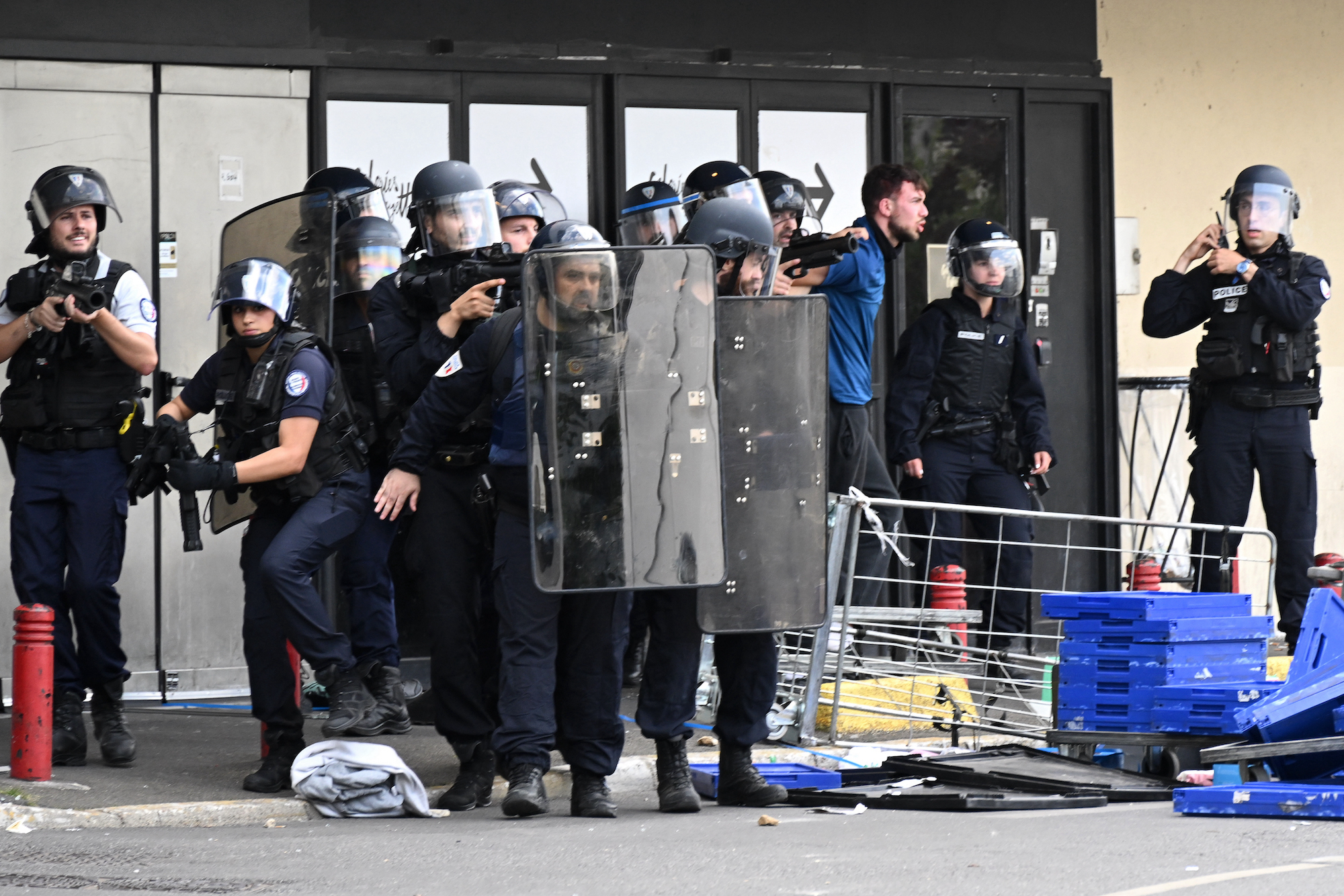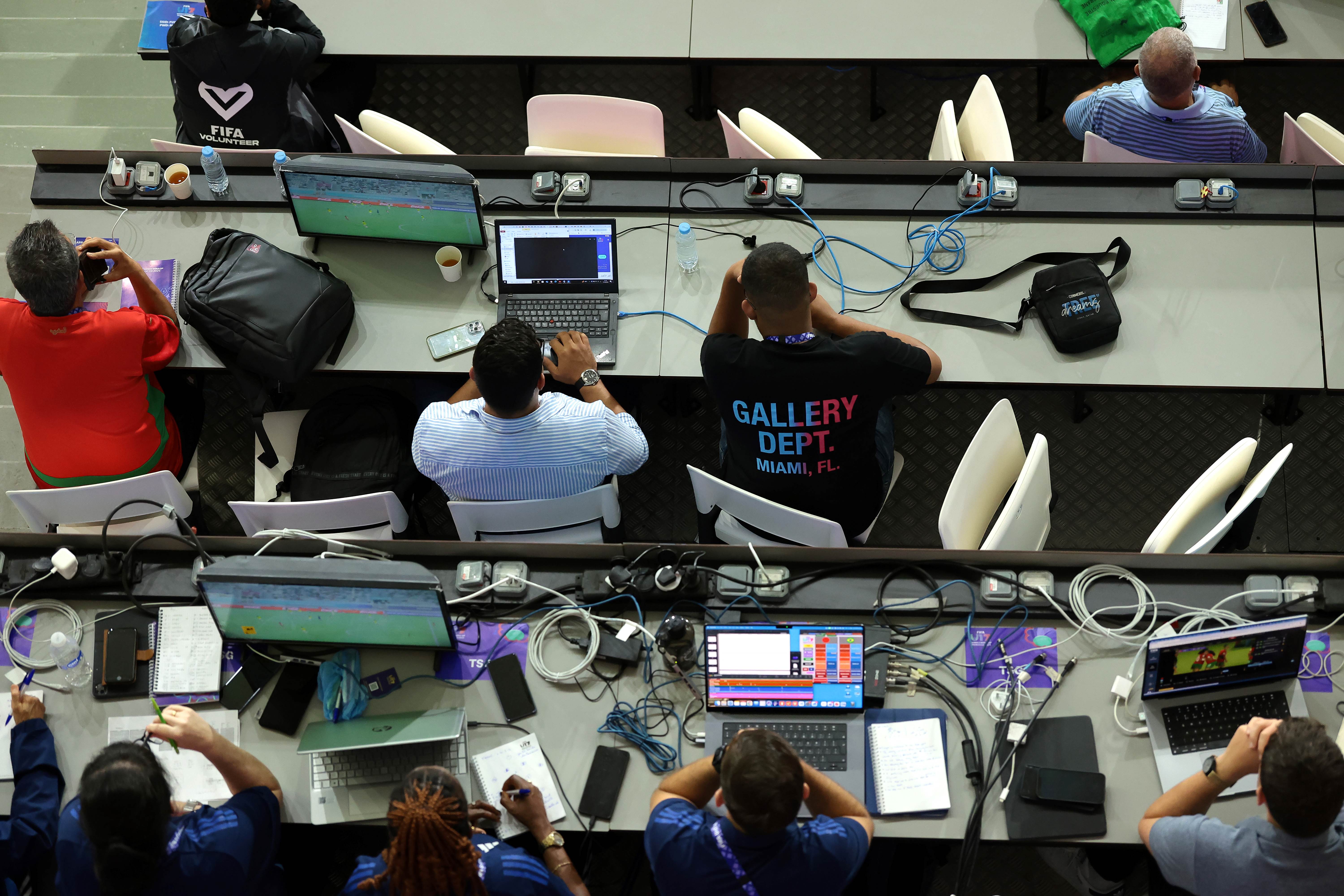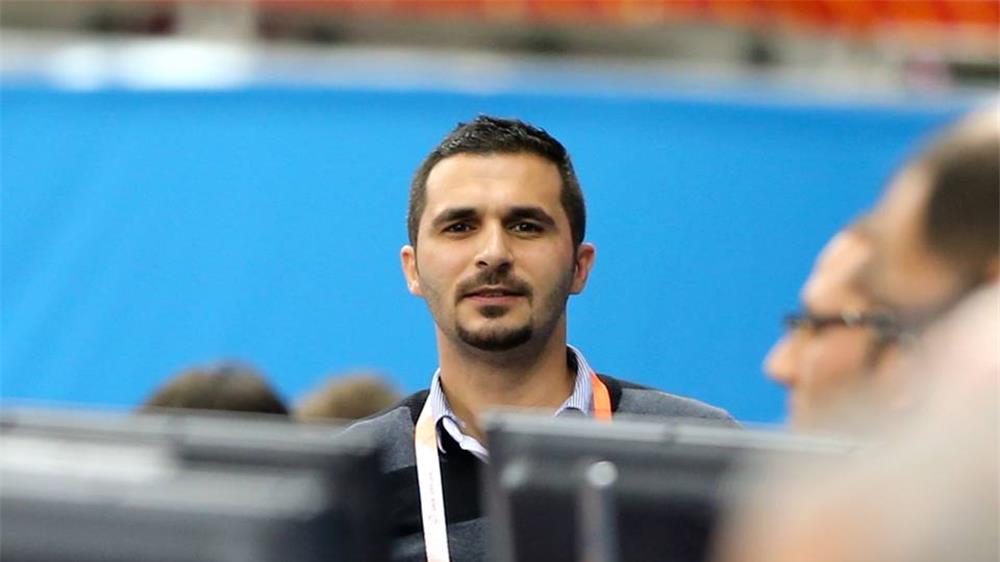Discriminatory media coverage of recent unrest in the suburbs of Paris shows that little has changed since the uprisings of 2005
Two years after the 2005 uprisings in the French “banlieues” (city suburbs), Noel Mamère, a Green Party representative and former journalist, presented a charter to the National Assembly (Parliament) titled "Improving Media Coverage of the Banlieues".
The charter had been debated and signed by hundreds of French academics and journalists following meetings with representatives from the banlieues and working-class neighbourhoods largely populated by those with immigrant origins.
Following this unprecedented popular movement, there was a growing sense in France of a need to turn a new page in regards to this marginalised and excluded population, politically, economically and in the media.
An “arc of hope” seemed to open up to new possibilities for the way in which communities in the banlieues are portrayed. Until this point, however, there had not been a dominant cultural influence of far-right ideas which have grown in popularity in recent years.
During the early years after the shock of the banlieues uprisings, we witnessed a development within local media towards broadcasting "positive topics" about these neighbourhoods in a genuine attempt to correct entrenched perceptions.
However, these stories often turned into caricature-like representations, glorifying individual successes.
Then, just as quickly, mainstream French media reverted to their pre-2005 policies towards coverage of the banlieues, particularly after the 2015 terrorist attacks in the French capital.
A cry in the wilderness
In 2019, a group of academics and journalists once again called for "a more positive and balanced media handling of the suburbs". These individuals were aware that the representations presented by the media about the suburbs were not just a reflection of the violence taking place within them but also contributed to its causes.
However, this call proved little more than a cry in the wilderness. News events in these neighbourhoods continue to be mainly covered by reporters specialising in crime and are almost always categorised in newsrooms as “security”-related subjects.
Now, following riots in the eastern suburbs of Paris after the shooting of Nahel Merzouk, a 17-year old boy of Moroccan and Algerian descent, by French police on June 27 in Nanterre, it is clear that the media is as biased towards these underprivileged areas as ever.
In a bid to conduct some sort of objective analysis, I took a close look at some of the talk shows, news coverage and commentaries from French media and journalists. At the same time, I revisited the archives of the media coverage of the 2005 uprisings, which began in almost the same way.
What I found was that, far from getting any better, the way the media covers events in the banlieues has worsened, as the language used has become closer to the language spoken by the radical far-right, with populist right-wing figures becoming more present in these highly biased coverages.
News: Portraying the world in language
When you follow the news about the banlieues in French media, you might initially think that these areas are mere remote districts disconnected from the rest of the country. They are frequently depicted as if they are overrun by armed gangs.
However, when you visit them, you come to see the vast gap between the media's stereotypes about these communities and their reality. The working-class banlieues and the upper-class neighbourhoods in the Parisian Basin and in other major French cities are, of course, very different places.
It is not just a class difference that can be seen in any city in the world but also a cultural difference evident through clothing, food and dialects.
This distinction was created by the French state itself when it confined the cheap labour that came from its former colonies to rebuild the country after World War II for security and economic reasons. The French state later solidified that distinction in the 1970s with the construction of social housing for the working classes.
The depiction of these suburbs that middle and upper class French see in the media is all they often have to go on. Their perceptions of the banlieues are not based on personal experience because a significant portion of French people, especially those from cities other than Paris, have never visited these suburbs or have barely passed through them.
They have not formed relationships or friendships with the suburbanites. Thus, what the media broadcasts and the newspapers write is their sole source for building an idea or drawing a picture of the suburbs and their inhabitants.
Therefore, the language used in the media not only serves to convey news or analysis but also to define the nature of the relationship between the “native” citizens of the country and those coming from France’s former colonies.
Consequently, a charged discourse filled with metaphors and comparisons in the media does not only choose sides in the public debate, but also clearly favours the far-right.
The analysis of these metaphors is a vital element in understanding the complex nature of using metaphor in the language of the press, especially television language.
As with the previous popular protests by inhabitants of the banlieues, the recent round was characterised by an inflammatory media discourse, predominantly using loaded language and comparisons mainly drawn from the far-right and the police apparatus, such as "riots", "hooligans", "lost lands of the Republic" or "suburbs as gun barrels".
Doubts were cast on the teenage shooting victim by referring to him as a "repeat offender", while the perpetrator's victimhood was manufactured by describing him as a "police officer doing his duty to protect citizens".
What was particularly concerning about the deteriorating coverage was the emergence of terms such as "civil war" and "clash of civilisations", which perpetuated an extremely negative representation of the banlieues, portraying those who live there as a "foreign invasion" or a "rebellious sect".
Such representation fundamentally questions their right to citizenship and consequently deprives them of any characteristics of citizenship, practically encouraging suspicion about them.
Moreover, these media outlets enthusiastically platformed figures from the far-right, such as Éric Zemmour, the far-right politician and former journalist and pundit, to present their “analysis” of events.
Media projection of the banlieues
By monitoring the major French mainstream media - television and digital - during the events that took place in the banlieues of Paris and other major cities this summer, it is clear that media coverage of these sorts of events (ie, the killing of a teenager by police) has not changed since 2005.
However, there is an essential distinction in that the scope of analysis during these events was broader than the scope of the news reports, and this played a bigger role in influencing public opinion towards clear biases revealed by recent polls.
The results of recent polling show that 73 percent of French people support revoking French nationality for dual nationals who participated in "riots".
Despite the events starting with the killing of a young man by a police officer, 77 percent of French people say they have a "good image of the police".
We cannot describe all French media as having extreme right-wing biases, so this biased media coverage against the banlieues is not primarily driven by ideological tendencies, but rather by two main factors that govern the nature of the coverage.
First, sensationalism, which is an essential factor in the way the media dealt with the incident of Nahel, for reasons related to the profit model of these media institutions that seek a wider audience base to expand their advertising revenue and achieve greater expansion on social media.
Sensationalism is more present in talk shows than in news broadcasts, where the suburbs are represented by controversial figures facing even more controversial figures from the extreme right.
Moreover, through this conflict, which always descends into accusations and insults, the media achieves high viewership ratings by platforming extremely contentious issues in a very superficial manner.
This is not to mention the social privilege of most media actors - their “positionality” - whereby the social gap between them and the inhabitants of these neighbourhoods makes it difficult for them to process information with any meaningful context, so they settle for sensationalism without delving any deeper.
Second, sources: Despite having extensive local correspondent networks, the dominant French media still rely primarily on police and official sources. Local news editors and correspondents work closely with security and judicial authorities.
Therefore, it is necessary to establish personal and permanent links with one or more security officials to produce a large number of articles quickly and easily. These contacts are not just sources, they turn into factors affecting the credibility of the security narrative; journalists rarely doubt information provided by the police.
Consequently, they do not take into account conflicting perspectives and do not ask the inhabitants of the banlieues to give their version of events.
When people tell their own stories
What made the shooting of Nahel Merzouk by police a news event was a leaked video, which was taken by a woman who witnessed the incident from a distance.
This video somewhat vindicated the victim and prompted the judiciary to act quickly, and pushed hundreds of young people in the banlieues to take to the streets to express their anger. But what if the video had never appeared on social media?
This scenario played out when Adama Traoré, a 24-year-old Black man of Malian-French descent, was killed by police while in custody in 2016. The media rushed to defend the police in the absence of any evidence in favour of the victim.
Here, the central role of social media in enabling inhabitants of the banlieues to speak for themselves, without going through the media, becomes apparent.
Following the crisis of 2005, Serge Michel and Mohamed Hamidi launched an online platform labelled "Bondy Blog", which was named after the working-class suburb of Bondy in eastern Paris.
Its goal is to give a voice to young people living in working-class neighbourhoods with a high concentration of Maghrebi and African populations who are stigmatised by violence.
The platform also works in the field of "media education", by organising training sessions led by media specialists at its headquarters, as well as providing a space for dialogue between journalists and those living in the banlieues.
It also aims to link suburban youth to scholarships in the field of journalism and media to open up the profession to young people from backgrounds with immigrant origins.
However, the prevalence of this type of media coverage in the French space should not obscure the fact that it is a diverse scene, and there are some mainstream media institutions that do try to offer a counter discourse to the dominant discourse or even provide professional and objective coverage at the minimum.
In the first approach, we find "Mediapart", a digital news and investigative platform with clear pluralistic biases and counteraction against hate speech from the extreme right.
In the professional approach, we find the newspaper "Libération" and its digital platform, which has provided balanced coverage that gives the suburbanites and their representatives the right to speak and clarify their perspective.
Not only that, but also the newspaper "Le Monde", which was at the very least committed to professionalism, distinguishing between opinion, news and hate discourse against foreigners.
Translated from the original Arabic by Yousef Awadh








































